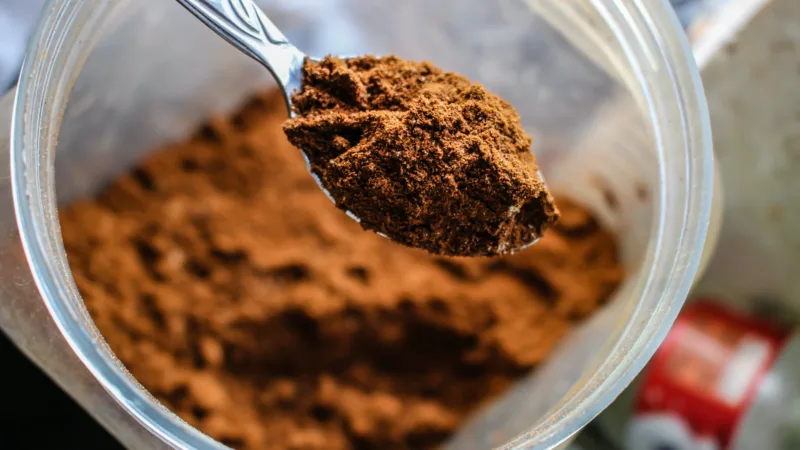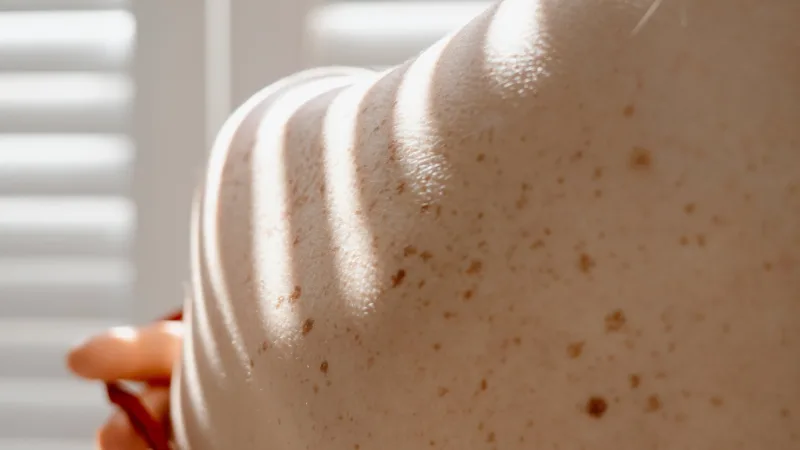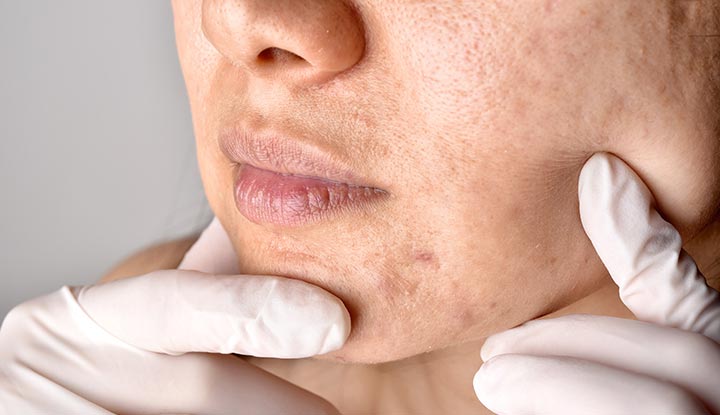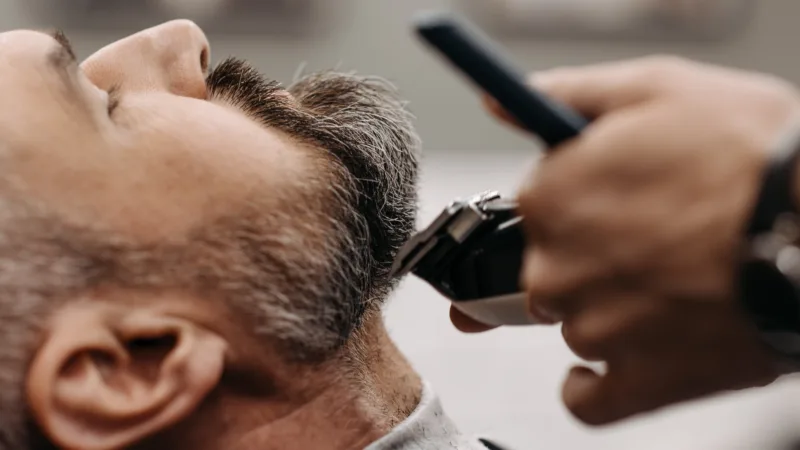Cracking the Code: Fungal vs. Bacterial Acne – Unique Triggers, Targeted Treatments, and Sneak-Peek Prevention.
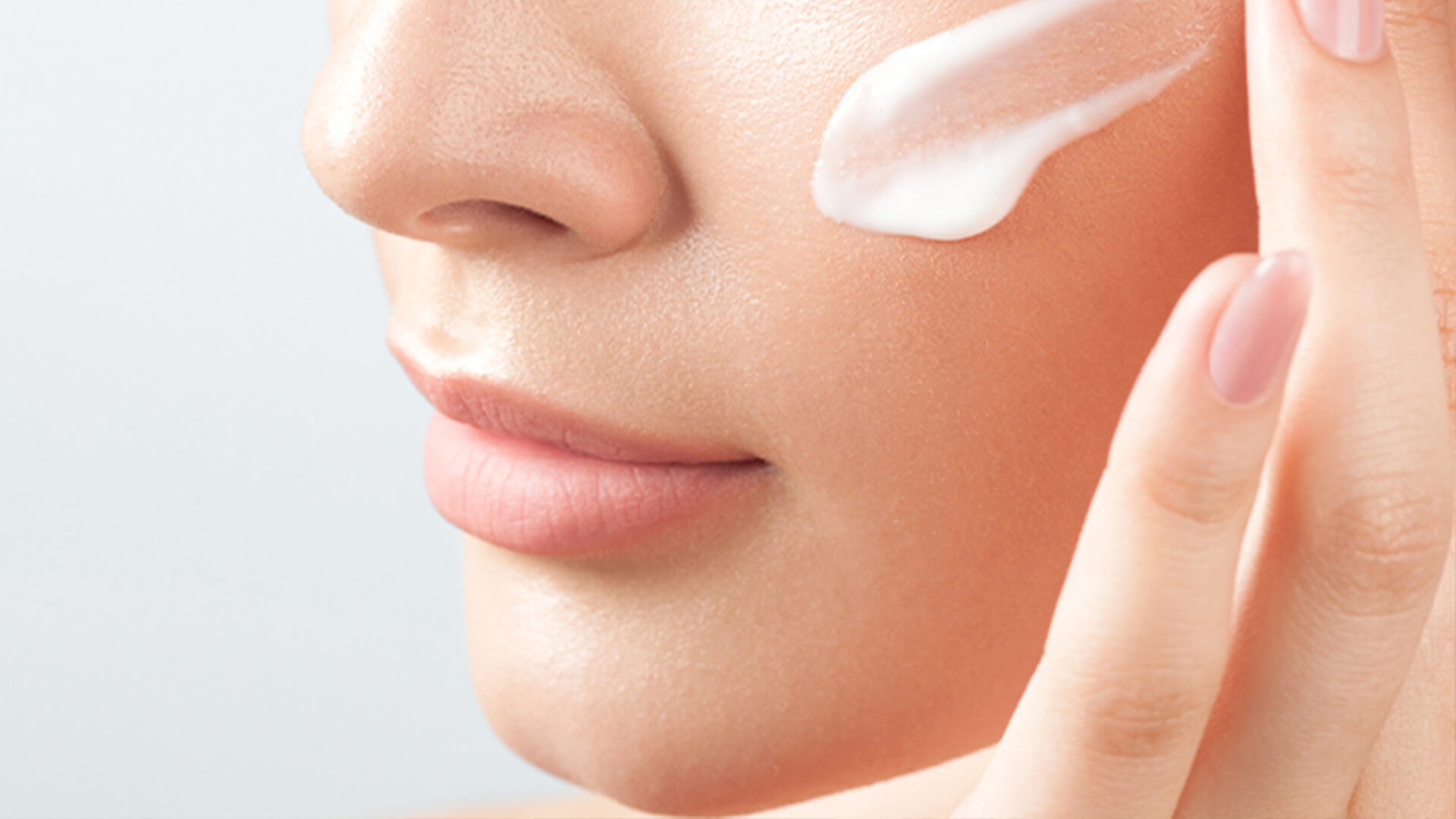
Join us on a skincare journey as we explore the nuanced world of acne. In our quest through “Decoding Divergence: Fungal vs Bacterial Acne,” we’ll traverse the unique landscapes of these two acne variations, uncovering specific triggers, meticulously tailored treatments, and an exclusive peek into cutting-edge preventive approaches. Come along as we unravel the subtleties that distinguish fungal from bacterial acne, guiding you towards a more enlightened and distinctly personalized skincare experience.
What is Fungal Acne?
Fungal acne, also known as Pityrosporum folliculitis or Malassezia folliculitis, is a skin condition that may resemble traditional acne but is caused by an overgrowth of yeast on the skin. The yeast responsible for fungal acne is often a type of fungus called Malassezia, which is a part of the normal skin flora.
Here are some key characteristics and features of fungal acne:
- Cause: Fungal acne is triggered by an overgrowth of the yeast Malassezia on the skin. This overgrowth can occur when there is an imbalance in the skin’s microbiome.
- Appearance: Fungal acne lesions typically appear as small, uniform, itchy, red or flesh-colored bumps. They are often mistaken for traditional acne, but unlike acne, fungal acne does not involve the formation of comedones (blackheads or whiteheads).
- Location: Fungal acne commonly occurs on the upper back, chest, shoulders, and forehead. It may also affect the face.
- Triggers: Factors that can contribute to the development of fungal acne include warm and humid environments, excessive sweating, the use of occlusive skincare products, and prolonged use of antibiotics or immunosuppressive medications.
- Diagnosis: A dermatologist may diagnose fungal acne based on the clinical appearance of the lesions. In some cases, they may perform a skin scraping or culture to confirm the presence of the Malassezia yeast.
- Treatment: Antifungal medications, such as topical or oral antifungals, are often used to treat fungal acne. Additionally, lifestyle and skincare adjustments, such as avoiding occlusive products and keeping the skin dry, may be recommended.
- Prevention: Maintaining good hygiene, avoiding occlusive clothing, and using antifungal products may help prevent the recurrence of fungal acne.
It’s essential to consult with a dermatologist for an accurate diagnosis and appropriate treatment if you suspect you have fungal acne. They can provide guidance on specific skincare products and routines tailored to your individual needs.
What is Bacterial Acne?
Bacterial acne, commonly referred to as acne vulgaris, is a skin condition characterized by the formation of comedones (blackheads and whiteheads), papules, pustules, nodules, and cysts. This type of acne is primarily caused by the overproduction of oil (sebum) in the sebaceous glands, leading to the blockage of hair follicles and the proliferation of bacteria on the skin. The predominant bacteria associated with bacterial acne is Propionibacterium acnes (P. acnes).
Key features of bacterial acne include:
- Comedones: Bacterial acne often begins with the formation of comedones, which are non-inflammatory lesions. Blackheads and whiteheads are common types of comedones.
- Inflammation: As the hair follicles become blocked with excess oil and dead skin cells, inflammation may occur, leading to the development of red and tender papules and pustules.
- Nodules and Cysts: In severe cases, bacterial acne can progress to the formation of larger, deeper lesions known as nodules and cysts. These can be painful and may leave scars.
- Areas Affected: Bacterial acne commonly affects the face, but it can also occur on the chest, back, shoulders, and neck.
- Hormonal Influence: Hormonal changes, such as those that occur during puberty, menstruation, pregnancy, or the use of certain medications, can contribute to the development or exacerbation of bacterial acne.
- Genetic Factors: There may be a genetic predisposition to acne, with a family history of acne increasing the likelihood of its occurrence.
Treatment for bacterial acne typically involves a combination of topical and/or oral medications. Common treatments include:
- Topical Retinoids: These help unclog pores and prevent the formation of new comedones.
- Antibiotics: Topical or oral antibiotics can help reduce the bacteria on the skin and control inflammation.
- Benzoyl Peroxide: This ingredient helps kill bacteria and can be effective in reducing acne lesions.
- Hormonal Therapy: For females with hormonal acne, oral contraceptives or anti-androgen medications may be prescribed.
It’s important to consult with a dermatologist for a personalized assessment and treatment plan based on the severity and specific characteristics of the acne.
What is The Difference Between Fungal and Bacterial Acne?
Fungal acne and bacterial acne are distinct skin conditions with different causes, characteristics, and treatments. Here are key differences between the two:
Fungal Acne:
- Cause: Fungal acne, also known as Pityrosporum folliculitis or Malassezia folliculitis, is caused by an overgrowth of yeast on the skin, commonly the Malassezia fungus.
- Appearance: Fungal acne lesions typically appear as small, uniform, itchy, red or flesh-colored bumps. They don’t involve the formation of traditional comedones (blackheads or whiteheads).
- Location: Common areas for fungal acne include the upper back, chest, shoulders, and forehead. It may also affect the face.
- Triggers: Factors contributing to fungal acne include warm and humid environments, excessive sweating, the use of occlusive skincare products, and prolonged use of antibiotics or immunosuppressive medications.
- Diagnosis: Diagnosis is often based on clinical appearance, and in some cases, a dermatologist may perform a skin scraping or culture to confirm the presence of the Malassezia yeast.
- Treatment: Antifungal medications, both topical and oral, are typically used to treat fungal acne. Adjustments in lifestyle and skincare practices, such as avoiding occlusive products, may also be recommended.
Bacterial Acne:
- Cause: Bacterial acne, or acne vulgaris, is primarily caused by the overproduction of oil (sebum) in the sebaceous glands, leading to the blockage of hair follicles and the proliferation of bacteria, mainly Propionibacterium acnes (P. acnes).
- Appearance: Bacterial acne involves the formation of comedones (blackheads and whiteheads), as well as inflammatory lesions like papules, pustules, nodules, and cysts.
- Location: Bacterial acne commonly affects the face, but it can also occur on the chest, back, shoulders, and neck.
- Triggers: Hormonal changes, genetic factors, and increased sebum production are major contributors to bacterial acne. Hormonal fluctuations during puberty, menstruation, pregnancy, or the use of certain medications can exacerbate the condition.
- Diagnosis: Diagnosis is often based on clinical examination by a dermatologist, considering the presence of different types of lesions.
- Treatment: Treatment for bacterial acne includes topical and/or oral medications. Topical retinoids, antibiotics, benzoyl peroxide, and hormonal therapies may be prescribed based on the severity of the condition.
It’s crucial to consult with a dermatologist for a proper diagnosis and tailored treatment plan based on the specific characteristics of the skin condition.
How Do You Know Which Type of Acne You Have?
Determining the type of acne you have often involves a combination of self-observation, understanding the characteristics of different acne types, and seeking professional advice. Here are steps you can take to identify the type of acne:
- Self-Observation:
- Examine Lesions: Take a close look at the lesions on your skin. Note if they are primarily comedones (blackheads or whiteheads), papules, pustules, nodules, or cysts.
- Note Itching or Irritation: If you experience itching, redness, or irritation, it might indicate a specific type of acne or skin condition.
- Understand Acne Types:
- Comedonal Acne: Characterized by comedones (blackheads and whiteheads) with minimal inflammation.
- Inflammatory Acne: Involves papules, pustules, nodules, or cysts with varying degrees of redness and inflammation.
- Hormonal Acne: Often occurs in response to hormonal fluctuations, commonly leading to deep, cystic lesions around the jawline, chin, and cheeks.
- Fungal Acne: Small, itchy bumps often caused by an overgrowth of yeast on the skin.
- Consider Location:
- Face, Chest, Back, Shoulders: Bacterial acne (acne vulgaris) is common in these areas.
- Upper Back, Chest, Forehead: Fungal acne (Pityrosporum folliculitis) may be more prevalent in these regions.
- Consult a Dermatologist:
- If you’re uncertain about the type of acne or if your condition is persistent or severe, it’s advisable to consult with a dermatologist.
- Dermatologists can conduct a thorough examination, inquire about your medical history, and may perform additional tests or skin analyses if necessary.
- Track Triggers:
- Pay attention to factors that may trigger or worsen your acne. This could include hormonal changes, specific skincare products, diet, or environmental factors.
- Consider Response to Treatments:
- If you’ve tried over-the-counter or home remedies with limited success, it may suggest a need for professional guidance. Different types of acne respond to specific treatments, and a dermatologist can recommend a targeted approach.
Remember that acne can vary among individuals, and a single person may have different types of acne lesions at the same time. Additionally, some skin conditions may mimic acne, making a professional evaluation essential for an accurate diagnosis and effective treatment plan.
Best Treatments for Bacterial Acne
The best treatments for bacterial acne, or acne vulgaris, typically involve a combination of topical and/or oral medications, lifestyle adjustments, and a consistent skincare routine. Here are some effective treatments:
- Topical Retinoids:
- Examples include tretinoin, adapalene, and tazarotene.
- Retinoids help prevent the formation of comedones, promote skin cell turnover, and reduce inflammation.
- Topical Antibiotics:
- Clindamycin and erythromycin are common choices.
- Topical antibiotics help reduce the population of Propionibacterium acnes (P. acnes), the bacteria associated with acne.
- Benzoyl Peroxide:
- An over-the-counter option, benzoyl peroxide has antibacterial properties and helps unclog pores.
- It is available in various concentrations, and higher concentrations may be prescribed by a dermatologist.
- Oral Antibiotics:
- Tetracycline, doxycycline, minocycline, and others are oral antibiotics prescribed for moderate to severe acne.
- They target bacteria and reduce inflammation. Long-term use is usually not recommended due to potential antibiotic resistance.
- Hormonal Therapy:
- For females with hormonal acne, oral contraceptives (birth control pills) can be effective in regulating hormones and reducing acne lesions.
- Isotretinoin (Accutane):
- A powerful oral medication reserved for severe, resistant acne.
- Isotretinoin reduces sebum production, inhibits the growth of P. acnes, and has long-lasting effects.
- Chemical Peels:
- Salicylic acid or glycolic acid peels can help exfoliate the skin, unclog pores, and reduce acne lesions.
- Light and Laser Therapies:
- Photodynamic therapy (PDT) and laser treatments can target bacteria and reduce inflammation. These are often used in conjunction with other treatments.
- Skincare Routine:
- Use a gentle cleanser to wash your face twice a day.
- Choose non-comedogenic and oil-free moisturizers and makeup products.
- Avoid picking or squeezing acne lesions, as it can worsen inflammation and lead to scarring.
- Lifestyle Adjustments:
- Manage stress, as stress can exacerbate acne.
- Maintain good hygiene, especially after sweating.
- Avoid excessive sun exposure and use non-comedogenic sunscreen.
It’s important to note that the choice of treatment depends on the severity of the acne, individual factors, and the presence of any underlying health conditions. Consulting with a dermatologist is crucial for an accurate diagnosis and a personalized treatment plan tailored to your specific needs and skin type.
Best Treatments for Fungal Acne
Fungal acne, also known as Pityrosporum folliculitis or Malassezia folliculitis, requires specific treatments to target the overgrowth of yeast on the skin. Here are some effective treatments for fungal acne:
- Antifungal Topicals:
- Azole Antifungals: Topical antifungals like ketoconazole, clotrimazole, or econazole are commonly used to treat fungal acne. They can be found in creams, gels, or shampoos.
- Apply Twice Daily: Follow the instructions provided and apply the antifungal cream or gel to affected areas twice daily.
- Antifungal Shampoos:
- Ketoconazole Shampoo: Using a ketoconazole shampoo can be effective, especially if the fungal acne is present on the scalp, forehead, or hairline.
- Leave-On Treatment: Allow the shampoo to sit on the affected areas for a few minutes before rinsing.
- Topical Selenium Sulfide:
- Selenium sulfide is another antifungal agent that can be effective in treating fungal acne.
- It is commonly found in dandruff shampoos, and it should be applied to affected areas and left on for a short period before rinsing.
- Oral Antifungal Medications:
- For more severe or widespread cases, oral antifungal medications like fluconazole may be prescribed by a dermatologist.
- These medications work systemically to target the overgrowth of yeast throughout the body.
- Avoid Triggers:
- Identify and avoid factors that contribute to fungal acne, such as excessive humidity, sweating, or the use of occlusive skincare products.
- Change Skincare Products:
- Switch to non-comedogenic, fungal-safe skincare products.
- Avoid products containing ingredients that may feed the Malassezia yeast, such as certain oils and fatty acids.
- Limit Sugar and Yeast Intake:
- Some individuals find that reducing sugar and yeast intake in their diet may help improve fungal acne.
- Consult a Dermatologist:
- If over-the-counter treatments are not effective, or if the condition is severe, it’s essential to consult with a dermatologist for a proper diagnosis and prescription-strength treatments.
- Maintain Good Hygiene:
- Keep the affected areas clean and dry.
- Change out of damp or sweaty clothing promptly.
- Sun Protection:
- Protect your skin from excessive sun exposure, as some antifungal medications can increase sensitivity to sunlight.
It’s crucial to note that self-diagnosis and treatment may not always be accurate, and a dermatologist’s evaluation is recommended for a precise diagnosis and tailored treatment plan based on the severity and specific characteristics of the fungal acne.
Are There Any Home Remedies for Treating Fungal and Bacterial Acne?
While home remedies may offer some relief for mild cases of fungal and bacterial acne, it’s important to note that these remedies may not be as effective as prescription or over-the-counter medications. Additionally, what works for one person may not work for another, and some home remedies may cause irritation in certain individuals. Here are some home remedies that may be worth trying:
For Fungal Acne:
- Tea Tree Oil:
- Tea tree oil has antifungal properties. Dilute it with a carrier oil and apply it to the affected areas.
- Apple Cider Vinegar:
- A diluted solution of apple cider vinegar may help balance the skin’s pH and discourage the growth of fungi. Mix with water and apply using a cotton ball.
- Honey and Turmeric:
- Both honey and turmeric have antibacterial and anti-inflammatory properties. Create a paste and apply it to affected areas.
- Coconut Oil:
- Coconut oil contains fatty acids with potential antifungal properties. Apply a small amount to the affected areas.
- Aloe Vera:
- Aloe vera has soothing properties and may help alleviate inflammation. Apply pure aloe vera gel to affected areas.
For Bacterial Acne:
- Green Tea Extract:
- Green tea has anti-inflammatory and antioxidant properties. Apply cooled green tea as a toner or use green tea extract in skincare.
- Manuka Honey:
- Manuka honey has antibacterial properties. Apply a thin layer of Manuka honey to affected areas and leave it on for some time before washing off.
- Turmeric Paste:
- Turmeric has anti-inflammatory properties. Create a paste with turmeric and water and apply it to affected areas.
- Oatmeal Mask:
- Oatmeal can soothe irritated skin. Make a mask with ground oatmeal and water and apply it to the face.
- Lemon Juice:
- Lemon juice has antibacterial properties due to its acidity. Dilute it with water and apply it to the skin.
General Tips:
- Maintain Good Hygiene:
- Keep the affected areas clean and dry.
- Change clothes promptly after sweating.
- Avoid Irritating Skincare Products:
- Use gentle, non-comedogenic products.
- Avoid harsh scrubs that may exacerbate inflammation.
- Healthy Diet:
- Eat a balanced diet with plenty of fruits and vegetables.
- Stay hydrated.
While these home remedies may offer relief for some individuals, it’s essential to be cautious and discontinue use if any irritation occurs. If your acne persists or worsens, it’s advisable to consult with a dermatologist for a professional evaluation and personalized treatment plan. Severe or persistent cases may require prescription medications for effective management.
FAQ’s
- How can I differentiate between fungal and bacterial acne based on their characteristics?
- Learn about the key characteristics of fungal and bacterial acne to identify the type of acne you may be experiencing, including appearance, common locations, and triggers.
- What are the unique triggers for fungal and bacterial acne, and how can I avoid them?
- Explore the specific triggers that contribute to the development of fungal and bacterial acne. Understand lifestyle adjustments and preventive measures to minimize the risk of outbreaks.
- What targeted treatments are most effective for fungal and bacterial acne?
- Discover the recommended treatments for each type of acne, including topical and oral medications, lifestyle adjustments, and specialized skincare routines to effectively manage and alleviate symptoms.
- Are there any home remedies for treating fungal and bacterial acne, and how effective are they?
- Explore home remedies that may offer relief for mild cases of fungal and bacterial acne. Understand their potential effectiveness and when it’s advisable to seek professional medical advice.
- What are some preventive measures to reduce the recurrence of fungal and bacterial acne?
- Gain insights into preventive strategies to minimize the likelihood of future outbreaks. Learn about skincare practices, dietary considerations, and lifestyle adjustments that contribute to maintaining healthy skin and preventing acne.


